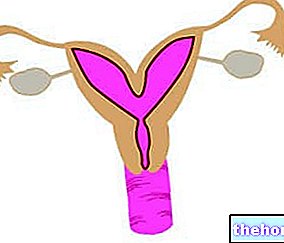Generality
The hemorrhagic corpus luteum is a disease that affects the ovaries. This condition represents the consequence of the rupture of a cyst, resulting from the anomalous dehiscence of a Graafian follicle, activated to make an oocyte mature.

Section of ovary, with developing follicles and regressing corpus luteum
In most cases, the non-resorption of the cystic corpus luteum with blood content does not cause any symptoms and spontaneously regresses within a few weeks, without the need to be surgically removed. Sometimes, however, this mass reaches significant size, causing acute pelvic pain, irregular menstruation, transient anemia, and abdominal tension.
The haemorrhagic corpus luteum can rupture and cause vaginal blood loss or a more or less important blood flow into the peritoneum. This last situation causes acute pain, similar to that of appendicitis and requires immediate medical intervention. The rupture of the hemorrhagic corpus luteum can also cause nausea, vomiting and fever. Occasionally, a cystic formation larger than 4 cm in diameter can be complicated by a torsion of the ovary.
If diagnosed early, the condition can be treated to avoid serious consequences. The most used therapies for the hemorrhagic corpus luteum are mainly pharmacological. In severe cases, laparoscopy is used.




























